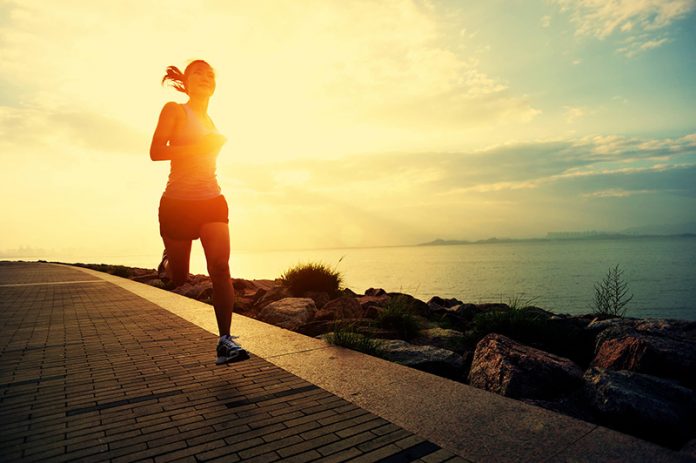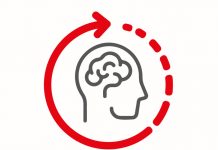I’ve fielded several questions from executives in the past few weeks, from Caixabank to Russian Railways, on a recurring and simple topic. When is the best time of the day to exercise for a busy, senior executive? ‘Best’ may mean different things, from simply having the best chance of doing the exercise, to what is optimal for mental performance and physical development.
As well as linking to the company context and notions of culture such a reflection also connects to our circadian rhythm, a topic that we’ve covered several times in the column. I lay out the main options below and also make available for download the complete chapter on physical training from the Sustaining Executive Performance book here.
Get up early, sacrifice some sleep
Getting up early is by far the most common strategy that I’ve found over the years. Many people say that if they don’t do it as soon as they get up, it simply won’t happen. Other distractions and priorities, from either the personal or professional domain tend to take over. The principal disadvantage of course, despite any good intentions of adjusting bedtime, is getting less sleep – just as important, if not more so, for executive performance. The good news is that physically fitter people need less sleep, with sleep cycles more efficient and physical movement during the day contributing to a higher percentage of stage 4 deep sleep at night.
In some high profile cases early is indeed very early. Apple CEO Tim Cook reportedly rises at 0345 to deal with emails as well as exercise, which one would assume involves a similarly early time of going to bed the previous night. When combining with the long hours that Cook spends at Apple the ‘entrepreneurs dilemma’ from Randi Zuckerberg comes to mind – work, sleep, family, fitness or friends: pick 3.
Will exercising in the morning make you more an effective executive? Perhaps. In Spark!: How exercise will improve the performance of your brain John Ratey showed that high school children in Chicago who ran a hard mile before class scored better in exam results, with better results coming with closer proximity to the physical effort. Yet intense exercise in the morning may also result in excessive tiredness, particularly for older or less fit individuals.
I do believe that doing something other than jumping on to the never-ending carousel of work upon immediately waking up is healthy practice. Meditation is another common practice for many and how you spend the first 10 minutes of your day (and last) can often have a big impact on the remaining 23 hours 50 minutes.
Yet work and exercise can also be combined. Many executives I’ve coached over the years like the practice of exercising and email (Apple’s Cook has both in close proximity) and lifelong runner and Telefónica CEO Jose Maria Alvarez-Pallete runs, he told me (and at different times of the day) as a means of improving decision making.
Commuter, not computer
A small minority of executives do have the luxury of commuting to work under their own steam, with cycling to work likely to be the most feasible option. As with the last point above, work need not be separated from the exercise. A bike ride to work may involve a reflection on the day ahead and good progress on the tough problems currently in view.
Such working may be more pleasant than the typical commuter practice. A study from the University of the West of England found the working day has essentially been extended through wider access to WiFi on trains and the spread of mobile phones, recommending that the journeys themselves counting towards the workday. Yet exercising, and particularly biking to work isn’t perfect either. With the likelihood that most executives work in urban centres, a stressful, not to mention dangerous, start and finish to the working day isn’t for everyone.
End of the day, hard to switch off
Exercise may also be the means by which we forget about work completely. Training after work may allow one to get rid of the frustrations, stress and rumination of the working day, particularly on hard sessions where heart rate increases beyond 70% of the maximum (220 beats per minute minus your age gives a theoretical approximation of that maximum). At such levels of intensity – which are completely safe, and actually the healthy thing to do – our body concentrates on essential biological functions and shuts down parts of the brain responsible for complex cognitive processing. In sum, we become a more primitive version of ourselves, useful to stop any overthinking which is causing stress as we return home after work.
Exercise as an antidote to stress is now well established in the scientific community. When we are more accustomed to the biological response to exercise – increased heart rate, blood flow and blood pressure to name a few – when the same things happen in the work environment, for example preparing to give an important presentation or receiving an unexpected email, our brain is better able to cope with the stressor. Research shows that stress in itself is not a bad thing for health, rather how we react to the stress.
The preference between before work or after work, which probably accounts for over 90% of cases, may simply come down to our chronotype preference. A lark will find it easier to exercise in the morning and an owl in the evening. Certainly being an owl will help with the biggest inconvenience of exercising later in the day – switching off our body to be able to go to sleep. Exercising closer to bedtime, especially if that exercise is intense, will mean time is required to effectively wind down. Since owls tend to go to bed later, they will have that extra time to do so.
Beat the circadian dip, take care with culture
Let me posit an alternative option – make exercise an integral part of your workday. Some people do this, though I’d say most under some form of duress – either fighting time constraints of a busy calendar, perhaps sacrificing lunch, or dealing with mocking comments from colleagues that they’re ‘skipping’ work.
Ask yourself the following question: how much quality work is accomplished in the mid-afternoon when our circadian rhythm dictates that we are at our lowest level of alertness? Jeff Bezos schedules his most important, “high IQ meetings” between 10am and noon and if anything comes up later in the afternoon, it waits until the following morning. Take your own energy audit over the course of a few weeks and schedule your exercise when you’re at your lowest point as a means of re-energising.
Will the culture of the organization allow such practice? Again, work need not be separate. A walking meeting, even running meeting, or tennis or squash game with a colleague may present opportunities to brainstorm or discuss tough problems, aided by the increased creativity that comes through exercise.
It’s not for everyone, as this would tend to lengthen the working day. Yet most executives these days are engaged in at least thinking about work during a large part of the waking day. Transitioning in and out of work, rest and play throughout our 24 hours instead of the traditional serial approach may be the future for most of us in the fourth industrial revolution.
So what about you? Asking my LinkedIn and Twitter networks in the days leading up to this article yielded higher than expected results in the post-work group yet before work is still the most common. Only one person of around 50 said they exercised during the workday. When do you exercise in a busy professional life? A simple question with interesting connections to the wider context of life and work.
This month’s article is the final under the guise of ‘MacGregor on Executive Health’. Since September 2016 I’ve had the privilege of this platform to cover areas that I’m passionate about, and which I think are critical for business today. The 26 articles of the past 26 months will be produced soon as a free eBook. And we’ll be back soon with a re-boot – new name and format.
About the Author
 Dr. Steven MacGregor is the CEO of The Leadership Academy of Barcelona [LAB] an executive education provider and management consultancy with clients including McKinsey, Telefónica and Uber. A Visiting Fellow at the Glasgow School of Art he teaches on open and custom programs at IMD, IE, IESE and CEIBS. Formerly a visiting researcher at Stanford and Carnegie-Mellon he is the author of Chief Wellbeing Officer (LID 2018) and Sustaining Executive Performance (Pearson 2015). His twitter handle is @spmacg.
Dr. Steven MacGregor is the CEO of The Leadership Academy of Barcelona [LAB] an executive education provider and management consultancy with clients including McKinsey, Telefónica and Uber. A Visiting Fellow at the Glasgow School of Art he teaches on open and custom programs at IMD, IE, IESE and CEIBS. Formerly a visiting researcher at Stanford and Carnegie-Mellon he is the author of Chief Wellbeing Officer (LID 2018) and Sustaining Executive Performance (Pearson 2015). His twitter handle is @spmacg.



































